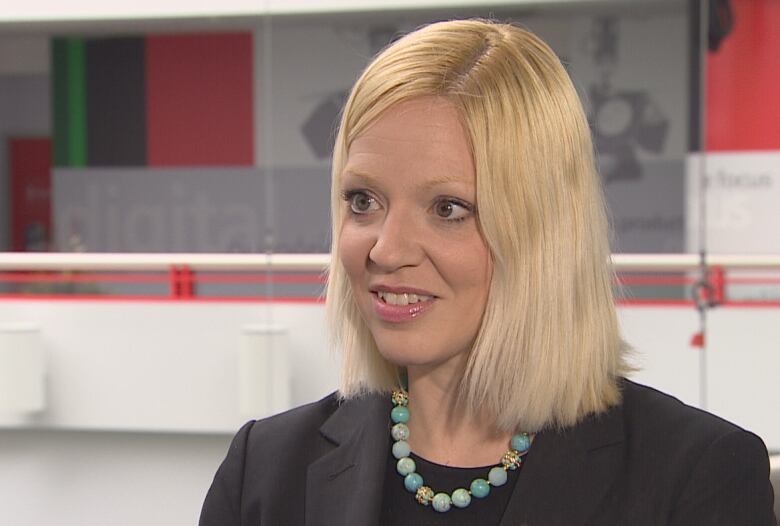Scientists successfully grow lambs in artificial womb, offering hope for preemies
The idea of treating preemies in fluid-filled incubators may sound strange, but physiologically it makes sense

Researchers are creating an artificial womb to improve care for extremely premature babies and animal testing suggests the first-of-its-kind watery incubation so closely mimics mom that it just might work.
Today, premature infants weighing as little as a pound are hooked to ventilators and other machines inside incubators. Children's Hospital of Philadelphia (CHOP) is aiming for a gentler solution, to give the tiniest preemies a few more weeks cocooned in a womb-like environment treating them more like fetuses than newborns in hopes of giving them a better chance of healthy survival.
The researchers created a fluid-filled transparent container to simulate how fetuses float in amniotic fluid inside mom's uterus, and attached it to a mechanical placenta that keeps blood oxygenated.

In early-stage animal testing, extremely premature lambs grew, apparently normally, inside the system for three to four weeks, the team reported Tuesday.
"We start with a tiny fetus that is pretty inert and spends most of its time sleeping. Over four weeks, we see that fetus open its eyes, grow wool, breathe, swim," said Dr. Emily Partridge, a CHOP research fellow and first author of the study published in Nature Communications. She is one of the co-creators of the device.
"It's hard to describe actually how uniquely awe-inspiring it is to see," she added.
Human testing still is three to five years away, although the team already is in discussions with the U.S. Food and Drug Administration.
"We're trying to extend normal gestation," said Dr. Alan Flake, a fetal surgeon at CHOP, who is leading the project and considers it a temporary bridge between the mother's womb and the outside world.
'Promising first step'
Increasingly hospitals attempt to save the most critically premature infants, those born before 26 weeks gestation and even those right at the limits of viability 23to 24weeks. Extreme prematurity is a leading cause of infant mortality, and the 10 per cent who do survivefrequently have serious disabilities such as cerebral palsy.

"By bridging them for fourweeks in this circuit, we would expect that we would then be delivering an infant that is physiologically 28 to 29 weeks of development.And this would really translate into, statistically, an almost 100 per centchance of survival and a very, very low chance of having any significant lifelong health effects," said Partridge.
One of the biggest risks for very young preemies is that their lungs aren't ready to breathe air.
"If they're breathingfluid, the lungs can continue to grow the way they were meant to," said Partridge.
Before birth, amniotic fluid flows into their lungs, bringing growth factors crucial for proper lung development. When they're born too soon, doctors hook preemies to ventilators to keep them alive but risking lifelong lung damage.
"The whole conundrum of critical prematurity is that every organ system has not yet reached a point of maturity where it's ready to be outside of the uterus, so we've tried to substitute for every biologic need of that fetus to allow it to continue to grow as a fetus, not as a baby," said Partridge.
Partridge said that she and her team have been amazed at how well the lambs were able to develop.
The researchers tested five lambs whose biological age was equivalent to 23-week human preemies, and three more a bit older. All appeared to grow normally, with blood pressure and other key health measures stable and few complications during the weeks they were inside the womb-like device.
"Although it'sa bit jarring to see this fetus growing in this extra-corporeal or out-of-body device, over fourweeks they do grow and that's really the best testament to why this project is so important," said Partridge.
We're trying to extend normal gestation.-Dr. Alan Flake
The idea of treating preemies in fluid-filled incubators may sound strange, but physiologically it makes sense, said Dr. CatherineSpong, a fetal medicine specialist at the National Institutes of Health.
"This is really an innovative, promising first step," saidSpong, who wasn't involved with the research.
How the 'Biobag' system works
- The premature lambs were delivered by C-section and immediately placed into a temperature-controlled bag filled with a substitute for amniotic fluid that they swallow and take into their lungs.
- "We make gallons of this stuff a day," said fetal physiologist Marcus Davey.
- It's currently an electrolyte solution; he's working to add other factors to make it more like real amniotic fluid.
- Then the researchers attached the umbilical cord to a machine that exchanges carbon dioxide in blood with oxygen, like a placenta normally does.
- The lamb's heart circulates the blood, without the need for any other pump.
No human testing yet
The study didn't address long-term development. Most of the lambs were euthanized for further study that found normal organ development for their gestational age. One was bottle-weaned and is now more than a year old, apparently healthy and living on a farm in Pennsylvania.
Flake stressed that the womb-like system isn't intended to support preemies any younger than today's limits of viability not what he calls the more "sensationalistic" idea of artificially growing embryos.
He acknowledged that parents might question the approach, but notes that the preemies always could be whisked into standard care if they fared poorly in the new system.
And while he said further adaptation of the device is needed before it can begin human testing, he envisioned parents being able to see the baby and even piping in the sound of mom's heartbeat.
Partridge said they are currently working with a bio-engineering firm to create an artificial womb that could be used for human preemies.
With files from CBC













_(720p).jpg)


 OFFICIAL HD MUSIC VIDEO.jpg)
.jpg)



























































































